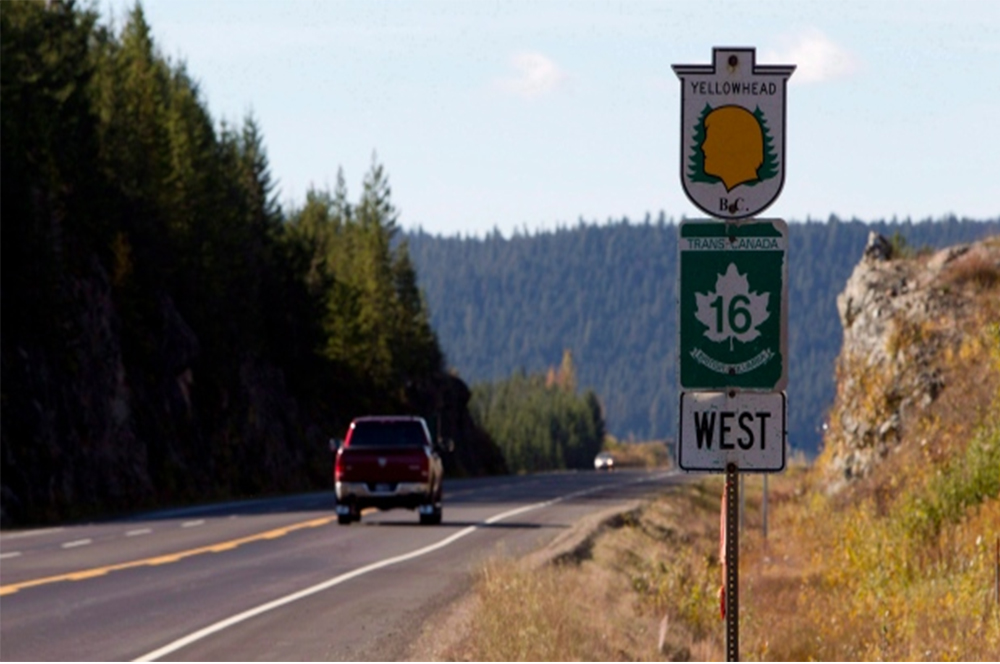Residents of northern British Columbia are reacting to news Greyhound Canada wants to pull out of the region, leaving people in small communities with few options to travel affordably.
"It's Highway of Tears, man. It's dangerous," said Lyle Heldson, sitting outside the depot in Prince George.
"It's expensive on Greyhound, but it's worth it. You don't have to worry about going missing."
Heldson uses the service to visit family about 300 kilometres west, along the "Highway of Tears" — so-called because of the number of women and girls, many of Indigenous descent, to go missing or be murdered between Prince George and Prince Rupert since 1970.
It's that notoriety that prompted the province to announce a public transit plan along the corridor, linking communities with short, daily runs allowing residents to affordably access jobs and services in larger centres.
However, the service is also cited by Greyhound as one of the reasons it wants to leave the region, saying it amounts to subsidized competition.
Smithers mayor Taylor Bachrach, a long-time advocate for the new transit service, disagrees.
"These transit buses are not intended to provide service between, say, Prince Rupert and Prince George," he said. "They're really focused on much smaller segments, getting people into the regional service centres like Smithers or Vanderhoof."
"That need still exists for an inter-city carrier that takes passengers those longer distances … Greyhound's been a life link for northern B.C. for a long time, and losing the last bit of that service would be a real loss for our region."
Heldson agreed.
"If I do take the transit bus … it goes from here to Burns Lake," he said. "I still have to hitchhike 31 miles."
Northeast B.C. without transit
While a public transit network is being put into place in northwest B.C., no such plans currently exist for the northeast.
That has Dawson Creek mayor Dale Bumstead worried about what happens if Greyhound is successful in its application to stop serving his city as well.
"It's a big deal," he said.
"I have a sister in Fort Nelson that rides the Greyhound connection for some eye appointments. I don't know what she does; it's gonna be a gap."
Bumstead said people in his city rely on Greyhound to get to medical appointments, visit family and ship and receive goods using its courier services.
"For a segment of the population that don't own a vehicle and don't have another option, they can't afford the airfare and things like that. It's a big, big issue."
Bustead said he is still reacting to the news, but expects it to be raised at an upcoming meeting of the Union of B.C. Municipalities and in conversations with the province.
"I don't know what the answer's going to be, but it will have an impact in these remote communities."
Health concerns
Bumstead's concerns were echoed by Dr. Ray Markham, a physician in Valemount and executive director of the Rural Coordination Centre of B.C., which advocates for rural health services.
"I could definitely see it resulting in people not getting the care that they need," he said when asked what losing Greyhound would mean to his community.
While there is a bus run by the Northern Health Authority to get patients to appointments, Markham said it doesn't operate frequently enough to successfully connect rural residents with all the services they need, nor does it allow them to visit family or buy groceries which are also important to overall health.
"We know that rural health outcomes are worse and there's pretty good evidence it's poorer access to services," he said.
"[Greyhound]'s just another thing that we're losing in the community."
B.C. Transportation Minister Claire Travena said she recognizes the importance of the service to the region, and is considering options to help retain or replace it.
"This is a vast area of the north and it is concerning that people may be left without a bus service," she said.
"We're going to be working to identify services that … will meet the needs of people across the region."
Greyhound Canada senior vice-president Stuart Kendrick said while it's not impossible for Greyhound to keep serving the north, he doesn't think it's possible for any transit company to be profitable in the region without some form of government support.
"There's always an opportunity or door to have discussions on this," he said. "But we're at the point now where we have to make this application."
The decision over whether Greyhound can continue to operate in the province with its proposed reductions falls to B.C.'s Passenger Transportation Board.
Should the application be successful, changes to service would be expected in 2018.

